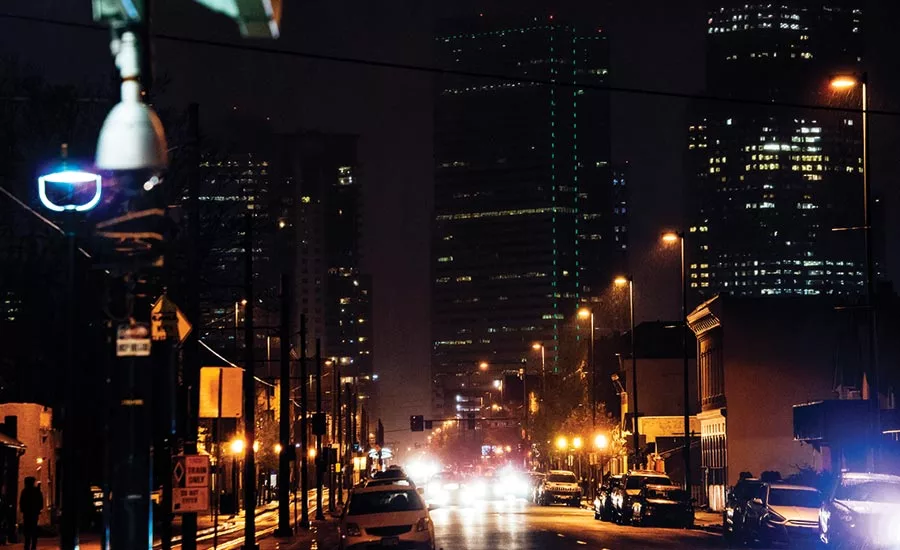Using IR Illumination to Improve Video Capture

One of the greatest challenges for security cameras is capturing clear video at night. Just like the camera in your phone, professional broadcasting and photography, security cameras require proper lighting to produce an image. If there is no light, there is no video. In other words, without a proper illumination source, security cameras will yield dark images that are useless for incident review, identification, detection and ultimately, incident prevention.
As the saying goes, crime never sleeps. It is imperative for facility managers to ensure infrared (IR) illumination technology is part of their night video surveillance solution. IR illumination is light that is invisible to the human eye; it ranges from 700 nanometers to 1,000 nanometers in the electromagnetic spectrum, and it is what enables security cameras to capture images even in total darkness. There are two ways to add IR light to your surveillance system. The first is through an IR integrated camera, and the second is with an external IR illuminator that is mounted beside, below or above the camera. Here are some key characteristics and distinctions between the two.
IR cameras, often referred to as integrated cameras or true day/night cameras, either feature IR light-emitting diodes (LEDs) around the camera lens (integrated), or they have a light sensor with a mechanical IR cut filter to remove IR illumination during the day (true day/night). The overall appeal for IR cameras is that they provide an all-in-one solution and are very effective for close-range monitoring applications.
However, the limitation with IR cameras is that their monitoring range is short. These cameras can also be subject to hotspots and heat accumulation. With all of the IR LEDs concentrated in one, central location on the camera, heat can build up, which can attract insects that obstruct the camera view and cause false alarms. IR cameras are not always able to have their camera angle match the LED field of view, which creates an inconsistent image. For example, if the camera lens is 90 degrees and the field of illumination is only 30 degrees, the picture will have a hotspot, and the purveyed individual or object will be washed out; these integrated cameras also attract insects around the lens, which obstructs the view of the camera. Also, LEDs produce heat. Using an integrated camera, the heat from the LEDs have nowhere to go, thus causing the LEDs to degrade faster which shortens the distance and then the LEDs die out.
On the other hand, external IR lights have longer illumination ranges and various angles that provide greater installation flexibility. Independent IR lights provide illumination at distances up to 919 feet, about 9-times the range of the average IR camera. External lights provide a variety of illumination angles, enabling the perfect pairing between the camera lens and the IR light, resulting in an evenly lit video feed. In an independent IR illuminator, the LEDs are arranged in rows (rather than a circle), enabling heat to disperse in all directions. The heat sync on the back minimizes heat accumulation and preserves the life of the LED. When LEDs within an IR integrated camera do burn out, the entire camera must be replaced. This is not the case with an independent IR light, which can be easily switched out. Deploying an independent IR light also creates greater storage and bandwidth for the camera.
The challenge with an external IR illuminator is the initial cost. The initial cost is higher than using an integrated camera, however, the ROI is returned in the first 12-18 months due to the low power consumption. No light is fail-proof. Even with external IR lights, the ample IR illumination may not be enough to overcome certain weather conditions such as haze and fog, in which case the cameras would still produce unclear images.
Ideal applications for external IR illuminators include warehouses, sleep labs, office buildings, license plate capture and other locales where a camera is being installed and there is no ambient light or when additional illumination is required. IR lights are also very cost-effective solutions for retrofit surveillance system projects.
So next time you are drafting specs with your integrator for a night surveillance installation, remember the importance of IR illumination and ensure that an IR solution is incorporated in your system to enhance your video capture.
Looking for a reprint of this article?
From high-res PDFs to custom plaques, order your copy today!








